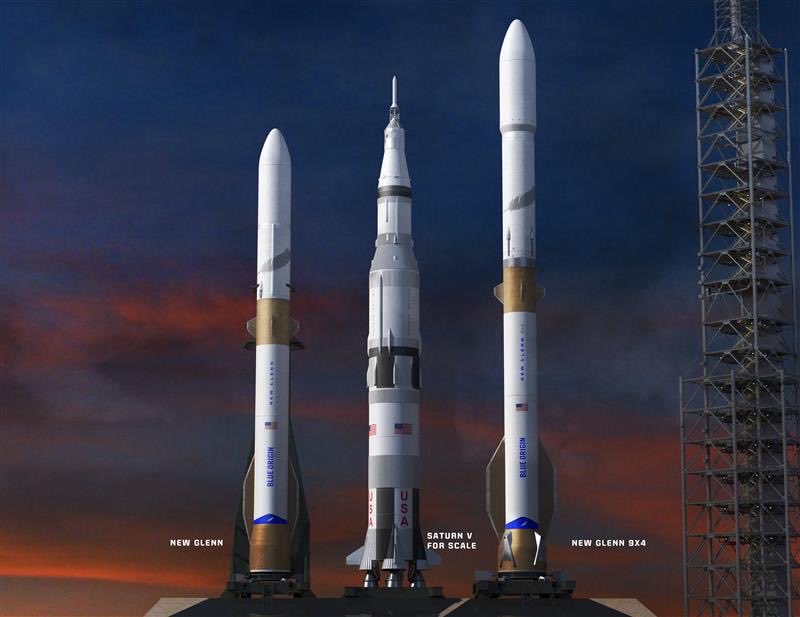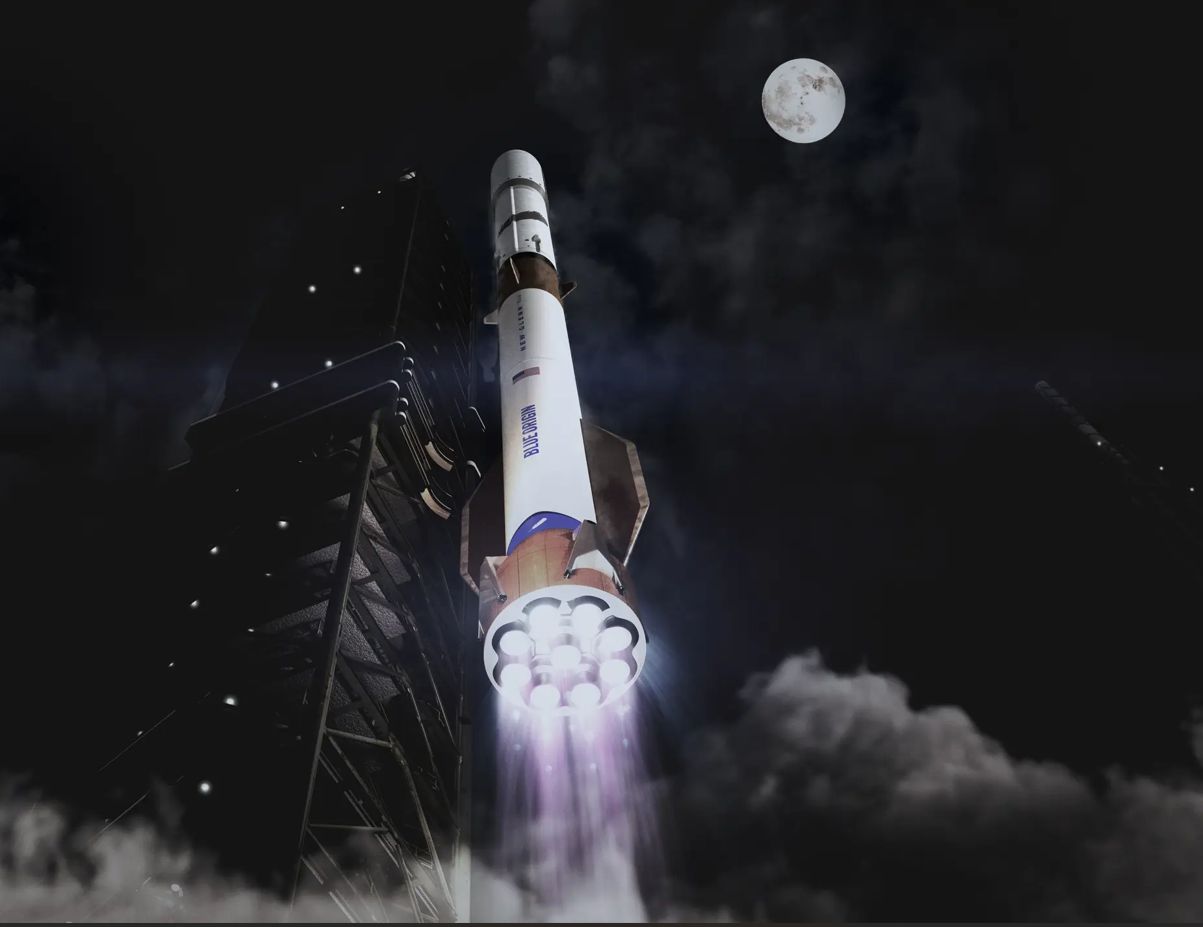Well, more Blue Origin \ New Glenn news! Apparently Blue Origin is going to phase in upgrades over the next coming several launches for New Glenn that will eventually transition it to a Super Heavy lift vehicle in the range of the SLS. The new vehicle will include uprated BE-4 (550,000 pounds, to 640,000 pounds) and BE-3 (320,000 pounds to 400,000 pounds) along with the use of super-cooled cryogenic propellants among other changes.

The most significant part of the update concerned an evolution of New Glenn that will transform the booster into a super-heavy lift launch vehicle. The first stage of this evolved vehicle will have nine BE-4 engines instead of seven, and the upper stage four BE-4 engines instead of two. In its update, Blue Origin refers to the new vehicle as 9×4 and the current variant as 7×2, a reference to the number of engines in each stage.
Such a booster would be a notable vehicle, with a lift capacity nearly on par with NASA’s Space Launch System rocket. However, it would have a fully reusable first stage with a larger payload fairing and would likely cost less than one-tenth the of NASA’s super-heavy rocket.


